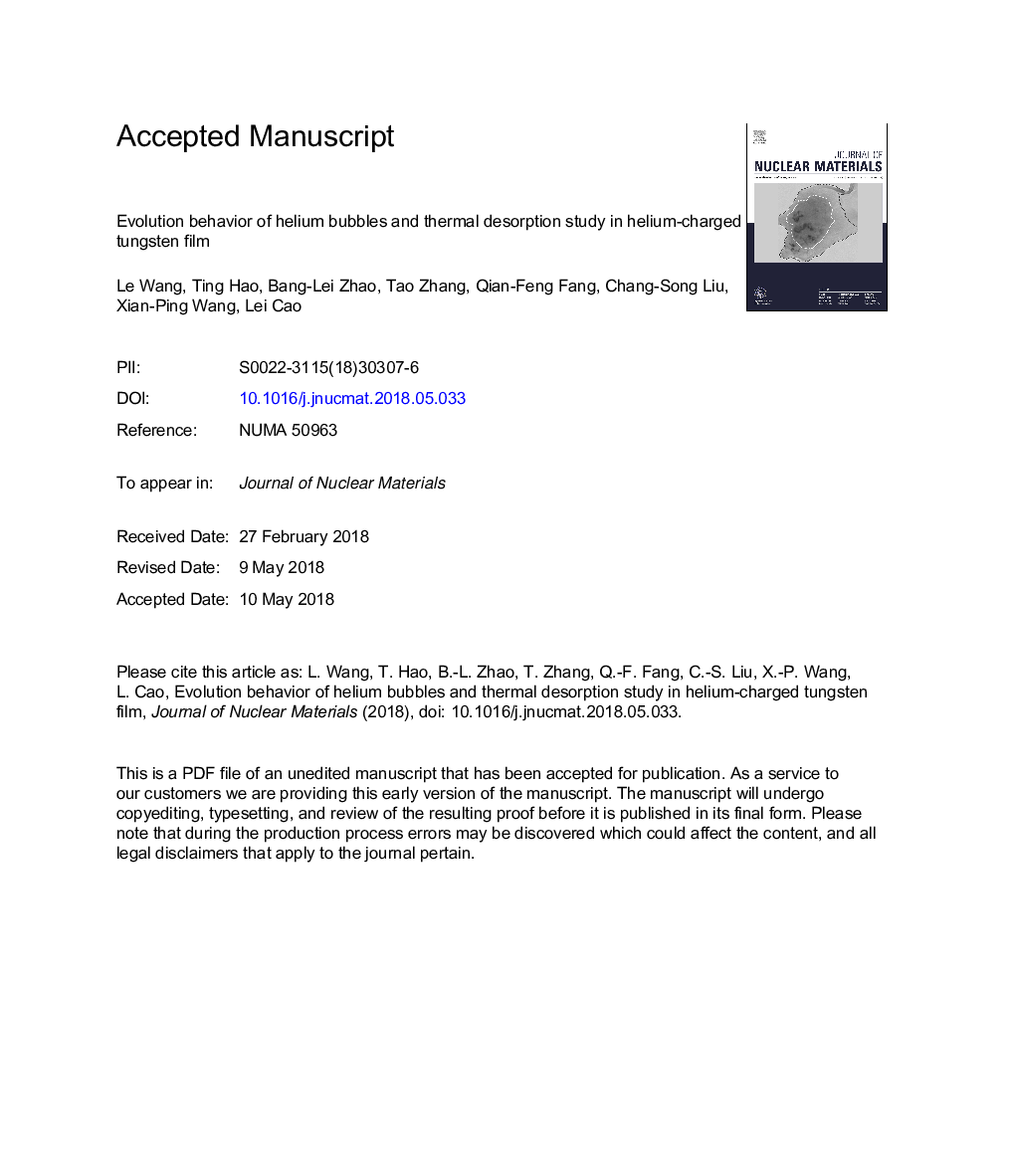| Article ID | Journal | Published Year | Pages | File Type |
|---|---|---|---|---|
| 7963057 | Journal of Nuclear Materials | 2018 | 26 Pages |
Abstract
In order to investigate the evolution behavior of the formation and growth of He bubble, helium-charged W films have been prepared by radio frequency (RF) magnetron sputtering in a mixed atmosphere of He and Ar as well as the annealing were performed at different temperatures at 500â¯Â°C, 700â¯Â°C and 1000â¯Â°C for 2â¯h, respectively. Microstructure of the films before/after the annealing were characterized by using X-ray diffraction (XRD), scanning electron microscopy (SEM) and transmission electron microscopy (TEM). There are a number of He bubbles in the films both before and after the annealing. The bubble size increases with increasing the annealing temperature but the bubble sizes in all samples are less than 3â¯nm. Nanohardness demonstrates a decrease tendency with increasing the annealing temperature. There are four He desorption peaks in thermal desorption spectroscopy (TDS) spectra within the range of 1000â¯Â°C for the as-deposited film, while they disappear completely or shift toward high temperature for the samples annealed at 700â¯Â°C and 1000â¯Â°C. The prominent TDS peaks can be attributed to the release of the interstitial He atoms from the trapping sites in the distorted lattice in the helium-charged W films.
Related Topics
Physical Sciences and Engineering
Energy
Nuclear Energy and Engineering
Authors
Le Wang, Ting Hao, Bang-Lei Zhao, Tao Zhang, Qian-Feng Fang, Chang-Song Liu, Xian-Ping Wang, Lei Cao,
